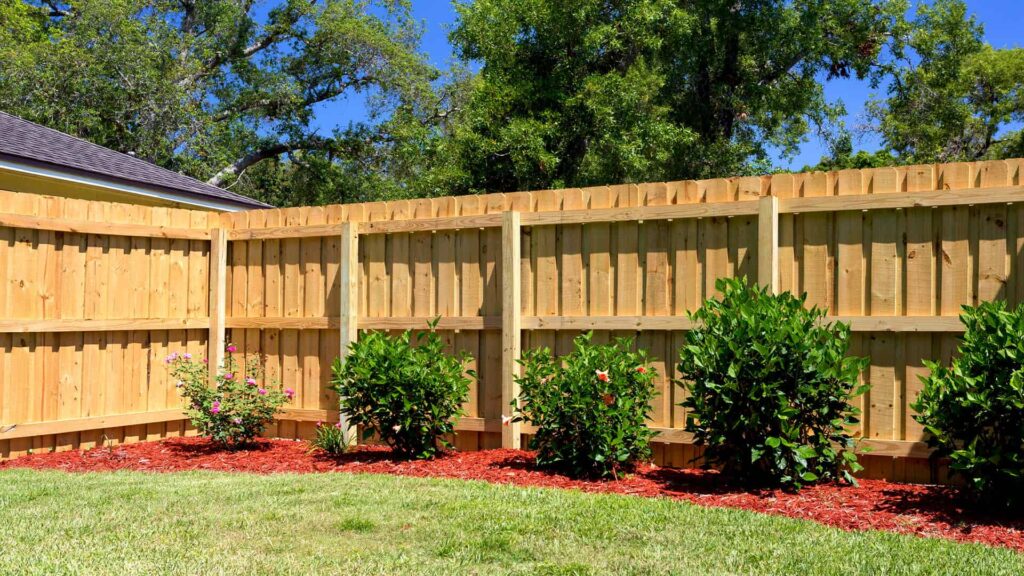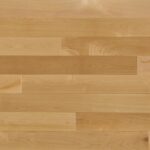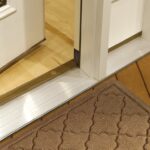Soil erosion around fences, A fence adds a lot of benefits to your property. Apart from acting as a boundary line and working as an effective barrier against intruders, it also improves the aesthetic appeal of your home.
Unfortunately, fence leaflets and foundations are prone to some problems, such as erosion of the soil underneath and rotting. Especially if the fence’s installation, protection and maintenance strategies are poor.
The issue of soil going underneath the fence happens due to disturbance of the daily activities or the natural elements. Soil erosion under the fence can sometimes go unnoticed for several years until serious damage to the soil is noted. One of the most serious problems associated with the uncontrolled draining of soil under the fence is the collapse of the entire wall.
Indeed soil erosion doesn’t happen under the fences alone. In addition, Soil erosion around fences affects the backyard also. However, the soil erosion under the fence poses a significant threat to your property, your pocket and the people walking around it.
Table of Contents
How to Stop Soil Going Under Fence
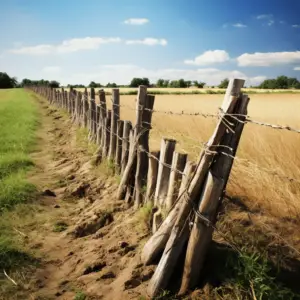
Add Plants around the Fence
Establishing a robust, permanent vegetative cover is one of the most remarkable ways to stop erosion. Plant roots stabilize the soil, reducing its susceptibility to erosion.
A fantastic technique to keep the earth together is to plant trees. Use high-quality revegetation products, and growth promoters for strong and healthy growth of the vegetative cover.
Pick quick-growing plants for ground cover. To prevent topsoil from washing away while plant roots are still developing, jute mesh is frequently placed beneath plants.
Your yard needs some fresh plants, which is one of the main solutions to all forms of soil erosion. Planting flowers and trees help enrich the soil and stop it from being washed away or turning into mud.
Longer root retention and simple water absorption of the plants will benefit your fence. If the fence is installed in a sloping yard, soil erosion is a significant problem. To help the fence adapt better to the land orientation, consider plants friendly to the land’s soil.
Apply Mulch along the Fence
Although the best time to mulch may be late winter or early spring, you may start applying mulch along your fence anytime from now. Mulch and fertilizer raise the soil’s pH level near your wood fence, and the soil will be strong and healthier. In addition, the mulch will reduce the intensity of soil erosion.
Improve the Environment around Your Fence
Consider beautifying the area surrounding your fence. The first two suggestions above are the steps to improve the area around the fence. However, in addition to stopping soil from going under the fence, you may cope with water runoff by giving your yard some fresh features.
Build the environment around the fence using stones, terraces, and retaining walls to improve drainage and prevent soil erosion.
Installing the new features that improve the environment of your property helps you keep your fence safe from puddles and other types of water damage. It’s the best hack to give good outcomes during the gloomy, rainy days of fall and winter.
Use the Geotextiles
Geotextiles, like filter fabric, are useful for stabilizing soil while preserving the porosity needed for water to flow. It is frequently used to regulate many forms of erosion. Soil erosion around fences can be used in lining dams and waterways, strengthening retaining walls, stabilizing roads, and preventing damage to one stratum by another.
The best purpose for geotextiles is to cultivate flora, and because of their permeability, they also function well as plant filters. Geotextile fabrics are quick and straightforward to install, cost-effective, and easily replaceable if damaged.
Build a Retaining Wall or a Silt Fence
Silt fences or retaining structures can be constructed to catch sediment and manage water flow to stop additional erosion.
A cheap method of sediment management is a silt fence. Building a retaining wall covered with geotextiles or sandbags for a strong barrier is an alternative to installing silt fences. Filter Tubes can be used to catch and filter runoff for sediments.
Can My Neighbor Put Soil against My Fence?
It’s not illegal for your neighbor to put soil against your fence. However, they are harming your fence by doing so. The behavior of placing soil against the fence can make them rot, especially if the wood fence has not been treated.
To wrap up the discussion of this question, the neighbors should not put soil up against your fence without your permission or take appropriate measures to prevent it from getting damaged.
Can You Stop Erosion around the Fence?
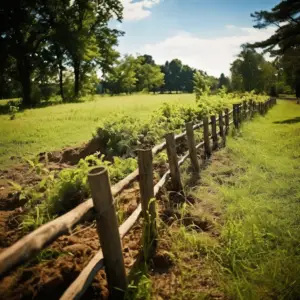
Yes, there is always a solution that you can employ to stop soil from going under the fence. The easiest and most effective strategy is to plant flowers or trees between the fence and the retaining wall.
That works by preventing further erosion from exposing the base of the retaining wall in the same way that the wood fence. In addition, a ground cover beneath the fence structure is also of utmost help.
Should Fence Follow The Ground Leveling?
Let the fence pickets follow the land’s level as you erect it. Since the base of the fence is flat with the turf, your furry pals can’t sneak under it when you’re not looking, making this choice perfect for pet lovers.
Can You Plant Flowers or Trees along the Fence?
If you have enough space to accommodate a garden comfortably, please utilize it in planting any vegetation in addition to the flowers and trees. A 3 to the 5-foot border is enough. When the garden is at least three feet away from the fence, you have enough space to turn a small wheelbarrow and elbow room to cultivate.
Conclusion
How do you retain soil against the fence? You have a few alternatives for protecting your wooden fence from the ground: you may use concrete posts, set wooden posts within the concrete, or place gravel boards along the bottom.
Apart from that, planting vegetation along the fence, mulching and using the geotextile, among other ground covers, helps stop soil from going under the fence.
Your soil is a priceless natural resource that has to be safeguarded from erosion-related harm. As long as you select sturdy erosion control materials and landscaping supplies, any of these techniques will be effective.
